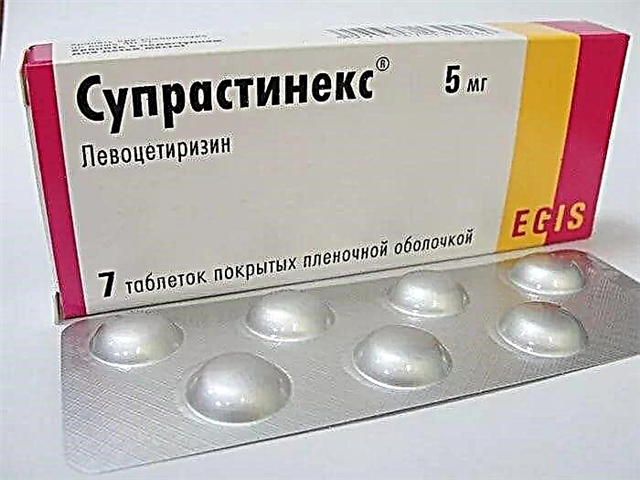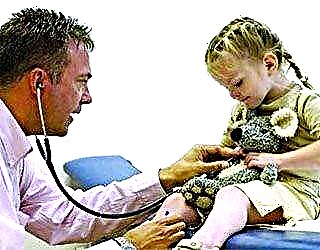Why does childhood psoriasis occur?
The most important question that worries parents: "Why does psoriasis develop in a child?" As mentioned above, the disease is inherited. Moreover, psoriasis can occur in every generation. A child is already born with a genetic disease, but it usually does not appear for a long time.
Predisposing factors
In addition to the defective genes that the child inherited from the parents, there are a number of predisposing factors: infectious diseases, allergic reactions, secondary immunodeficiency syndrome.
Studies have shown that group A beta-hemolytic streptococcus infections are a major predisposing factor for psoriasis.

Provoking factors
The first signs of psoriasis in a child can be detected after exposure to adverse external factors that provoke the disease. There are a huge number of them.
The exogenous (externally acting) causes of psoriasis include: trauma, abrasions, abrasions, scratches, injection sites, tattoos, pet and insect bites. In general, all external influences that in one way or another violate the integrity of the skin.
In the summer, there is an increase in the incidence, since thermal sunburn also provokes the development of psoriasis. Various skin diseases can serve as a trigger for this ailment. These include: acne, fungal skin lesions, lichen, herpes. Internal factors can also provoke psoriasis. For example, after taking certain medications: glucocorticosteroids, cytostatics.
Psoriasis in children accounts for 4% of all dermatological diseases.
What is childhood psoriasis?
Experts identify several forms of childhood psoriasis, which have their own characteristics.
Psoriasis is not contagious.
Diaper psoriasis
Psoriasis in infants often manifests itself in a diaper form. This type has another name - psoriasis in the area of wearing diapers. This form of the disease is characterized by the appearance of psoriatic elements in the area of the thighs, buttocks, perineum, that is, in places where the skin touches feces or urine. Physiological functions in this case act as a provoking factor.
It should not be forgotten that diaper dermatitis and psoriasis have a similar clinical picture, so it is important to differentiate these diseases, since the treatment tactics are different for them.
Guttate psoriasis

Guttate psoriasis is more common in school-aged children. Adults do not suffer from this form of the disease. A feature of teardrop psoriasis is that the pathological process does not affect the nail plate, unlike other forms of psoriasis.
Also, this type has a clear connection with an infectious disease, that is, psoriasis either debuts or worsens precisely after an infection. Psoriatic elements are observed on the body and limbs, the face, as a rule, remains clean.
Congenital psoriasis
Children with this form of the disease already at birth have a pronounced clinical picture. These newborns should be treated immediately after birth.
Plaque psoriasis
Plaque psoriasis is a classic form of the disease. It is this type of psoriasis that occurs most often in children of all ages. The clinical picture is similar to that of adults.
Follicular psoriasis
A feature of follicular psoriasis is that it develops in the mouths of the hair follicles. At the onset of the disease, psoriatic elements are localized on the legs and thighs. But in the initial stages, the rash is often not noticeable. Revealed after combing. For a long time, this form may not be noticeable to a specialist and the parents of a small patient. The disease is registered after the appearance of the typical elements of the disease.
Generalized psoriasis
Generalized pustular psoriasis is a rather serious form of the disease and often requires hospitalization of the patient. With generated psoriasis, in addition to lesions of the skin along its entire length, the general condition of the patient is disturbed.
Manifestations of child psoriasis depending on the stage
The clinical symptoms of psoriasis are distinctive for each age period. Young children are characterized by the appearance of pathological elements on the scalp, face, behind the ears. And also most often the areas of the body are affected in places where diapers and natural folds are worn. The rash is accompanied by increased exudate secretion. Often, a specialist observes weeping.
The clinical symptoms of psoriasis in older children practically do not differ from the manifestation of the disease in adults. In almost all patients, the rash is accompanied by severe itching and unpleasant painful sensations.
The main element of a psoriasis rash is a red spot that grows and thickens over time. Then the element, dense to the touch, is covered with a silvery crust. The affected skin is severely flaky. Violation of the water-lipid membrane, due to the disease, leads to the appearance of cracks. The clinical picture of children's psoriasis has several stages, which replace each other.
1st stage
The initial or progressive stage is characterized by the appearance of psoriatic elements on the body or scalp. The child is worried about severe itching, which can disturb sleep. There may also be painful sensations in the area of pathological foci of psoriasis. The elements of the disease thicken over time and crust over.
Dry skin leads to cracks. As a result, wounds and scratching crusts can be observed on the patient's skin. If a child's illness is severe, then the general condition of the patient is disrupted. The temperature rises, the baby is lethargic, refuses to eat, sleep is disturbed. On examination, an increase in lymph nodes can be observed.
2nd stage
The stationary stage begins after consulting a specialist and in the process of treating the disease. Clinical symptoms begin to fade during treatment, and the child's condition improves. And also the formation of new pathological elements on the skin is not observed.
3rd stage
The regressive stage is characterized by the complete disappearance of pathological foci. On the skin, it is possible only to observe depigmented areas in the place of the former psoriatic elements.

Approaches to the diagnosis of psoriasis in children
Only a specialist, in this case a dermatologist, can make an accurate diagnosis. After examining the patient's skin and scalp, the doctor proceeds to special methods for detecting the disease. To do this, the doctor takes the affected area of the skin for further examination.
Specific changes in the biopsy specimen characteristic of psoriasis can confirm the diagnosis. Children are shown to consult a psychologist, since psoriasis significantly worsens the patient's quality of life.
It is important to understand that there are currently no specific laboratory tests to confirm the diagnosis. Laboratory methods are used to assess the general condition of the patient. These diagnostic methods include a general analysis of blood and urine, the determination of important biochemical parameters in the blood. Also, to determine the defect of the genes on the basis of which the disease arose, a consultation with a geneticist is shown, followed by taking special tests.
Instrumental diagnostic methods also do not confirm the diagnosis of psoriasis. They are prescribed in order to exclude other pathologies and conduct a thorough differential diagnosis, as well as identify other diseases that may interfere with the treatment process. Such studies include fluoroscopy of the chest, to exclude tuberculosis, as well as the setting of the Mantoux test. Ultrasound examination of the abdominal organs clearly gives an idea of the state of the internal organs.
Treatment of psoriasis in children - an integrated approach
Treatment for psoriasis should not be based on any one method. Disease therapy should consist of several components, that is, an integrated approach is important.
Local medications

Local preparations are intended for external use and are administered directly to the affected areas of the skin. These include topical glucocorticosteroids (Methylprednisolone, Mometasone, Alclomethasone).
The form of the medicinal substance prescribed to the patient should depend on the patient's age and the clinical form of the disease. Children use creams, ointments, emulsions, solutions. The specialist, after making the diagnosis, prescribes the minimum dose of the drug. If there is no effectiveness, then the dosage is increased.
In the stationary and regressive stage, the appointment of analogs of vitamin D3 (Calcipotriol) is shown. This drug restores the affected layers of the skin. Ointments, creams, emulsions, which include zinc, are also indicated for patients during treatment. Dry skin needs daily hydration.
Oral preparations
Oral preparations have a systemic effect on the child's body. This type of therapy should be careful and should be used in the absence of other somatic pathology, as well as in moderate and severe forms of the disease.
As a rule, drugs for systemic exposure are used when other methods of treatment are ineffective and in the first period of clinical manifestations. These drugs include Methotrexate, Cyclosporin.
These drugs have a large number of side effects, so their choice must be justified. Antibacterial drugs can be prescribed for existing foci of chronic infection.

Physical factors for psoriasis treatment
Phototherapy is a therapeutic and prophylactic measure for psoriasis. But one should not forget about the side effects, ranging from allergic reactions to skin cancer. Phototherapy is more commonly used in combination with other treatments.
Traditional medicine for the treatment of psoriasis in children
Traditional methods for the treatment of psoriasis cannot be used due to the lack of evidence and safety. When the first clinical symptoms appear in a child, parents should immediately show him to a specialist.
Regime and diet
The daily routine of a child suffering from psoriasis is not very different from that of healthy children. The only thing is to exclude active games that can injure the child's skin. Try to avoid places where there is a possibility of getting stings from insects. And also less exposure to the open rays of the sun.
The diet of patients should be alkaline, balanced, fortified. Due to dehydration of the skin, it is important to establish an abundant drinking regime.
Prevention of the development of psoriasis in babies
In kindergarten and at school, active, contact games should be avoided. Wear comfortable, loose-fitting clothing made from breathable materials. It is important to monitor the condition of the skin, to prevent dehydration. Use moisturizing nourishing creams and ointments daily.
In sunny weather, before going outside, apply special creams with a high level of protection. Parents need to monitor the child's psycho-emotional peace.

Chances of a favorable outcome
Psoriasis is a chronic disease that occurs with alternating periods (remission, exacerbation). Most often, symptoms appear in the autumn-winter period. Adequate treatment ensures a favorable prognosis and improves the patient's quality of life. Severe generalized forms significantly worsen the prognosis and also lead to disability.
Conclusion
Parents with psoriasis have a high chance of having a child with the same condition. Psoriasis can manifest itself in every generation. The appearance of rashes is a reason for consulting a specialist. Only a doctor can choose an adequate treatment and make an accurate diagnosis. Rehabilitation, which can take place in the resorts of Russia, is of no small importance.
The correct approach to the treatment of the disease improves the patient's quality of life and reduces the risk of disability.



